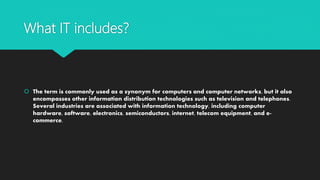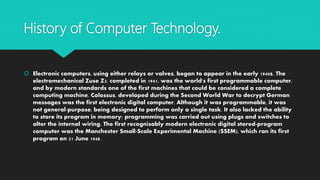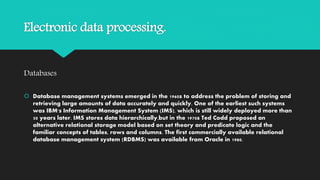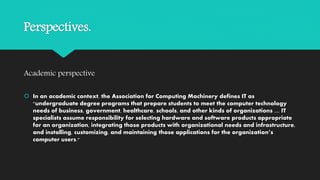Information technology (IT) refers to the use of computers and telecommunications to store, retrieve, transmit, and manipulate data or information. It is considered a subset of information and communications technology. Key aspects of IT include computer hardware, software, databases, data transmission and manipulation. The history of IT began with early mechanical devices and progressed through electromechanical and electronic computers. Modern databases, structured query language, data warehouses, and data mining have enabled effective analysis and use of massive amounts of digital information. IT is applied in business, government, healthcare and other organizations to automate processes and provide information for decision making. Ethical issues associated with IT include breaches of copyright and privacy.



![How IT was discovered?
Humans have been storing, retrieving, manipulating, and communicating information since
the Sumerians in Mesopotamia developed writing in about 3000 BC,[6] but the term
information technology in its modern sense first appeared in a 1958 article published in the
Harvard Business Review; authors Harold J. Leavitt and Thomas L. Whisler commented that
"the new technology does not yet have a single established name. We shall call it
information technology (IT). Their definition consists of three categories: techniques for
processing, the application of statistical and mathematical methods to decision-making, and
the simulation of higher-order thinking through computer programs.](https://image.slidesharecdn.com/informationtechnology-171218100551/85/Information-Technology-PowerPoint-Project-4-320.jpg)











